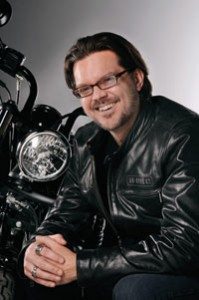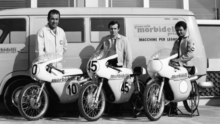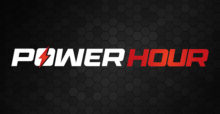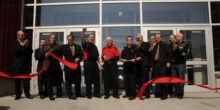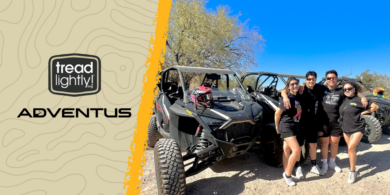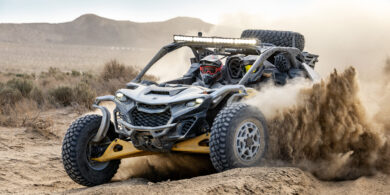2014 Powersports Business Industry Leader – Mark-Hans Richer
2014 Powersports Business Industry Leader
Mark-Hans Richer
Senior Vice President & Chief Marketing Officer
Harley-Davidson Motor Co.
Mark-Hans Richer doesn’t blame dealers for being a little nervous at his appointment as chief marketing officer of the Motor Co. As he claims, there were two marks on his motorcycling soul: he started in advertising in Chicago working on packaged goods and McDonald’s burgers (“Strike one,” he says). A stint in automotive in Detroit didn’t necessarily lower the raised eyebrows, as he says he heard “he’s going to turn us into automotive” more than a few times.
“I knew they had nothing to worry about because that is the LAST thing I would wish on us — no ‘Summer Sellathon’ please,” he said.
That, and his passion for motorcycling is unquestionable.
“I have owned and ridden street motorcycles for 29 years including all over the world (for example, I paid a local guy off the street $20 to ‘rent’ his bike for a day in Cameroon in 1994 just because I had to scratch the itch), and have a deep respect for this brand and our passionate and creative customers,” Richer said. “I felt a strong responsibility from day one at H-D to make sure we did all we could to preserve and grow what I consider to be an important institution, and my experiences outside of the industry have been useful, even if for knowing what NOT to do. You learn something good from all your experiences as long as you know how to apply them.”
These days, those applications have included guiding the marketing efforts of the Project Rushmore and Street 500 and Street 750 motorcycles, highly successful initiatives that helped Richer be selected as a 2014 Powersports Business Industry Leader.
What is the biggest opportunity for the industry, and how can the industry take advantage of it?
The biggest opportunity for the industry is to stop thinking as much about product segments and start thinking and organizing around consumer segments. Powersports still seems a little trapped in the idea that cc size or “standard” vs. “touring” or other engineering or industry conventions determine consumer appeals. It’s the other way around — customers lead, and when you look through that lens, it is liberating. What they want is not always what we would prefer to give them or find easiest to classify — the Street Glide is the number one selling “touring” bike in the world, for instance. Our neat rationalities do not always win.
What has been the biggest challenge in your current position and how have you dealt with it?
Our biggest challenge has been respecting the substantial strengths of the Harley-Davidson brand — and by that I mean our ideals, our products and experiences, our dealers and customers — and yet not being trapped by our prior successes. Change is hard in general, but when you’re very successful as we and our dealers have been, it is that much harder to go further. But we are making those transitions, and customers of all kinds have responded by voting with their dollars — we’ve gained double-digit market share in every consumer segment since 2008. It’s gratifying. And yet we can always be even better.
What is the best advice that you can give others in the industry?
The best advice I can think of is to see your customers, regularly, both retail and dealer customers.
Harley-Davidson’s growth among its outreach consumers continues to grow at an impressive rate. How important has that growth been to H-D, especially considering the rate of that growth 10-15 years ago, when I presume it was not as succinct?
Of course growth amongst our outreach segments has been very important. But most important of all was that it showed that you don’t have to pick “new customers” vs. “current customers” — we have grown substantial share with all U.S. customer groups, including our Core, at the same time. And we’ve grown globally even as we have continued to gain share domestically. If you do it right, it’s not a zero-sum game. When we started, many people assumed you had to pick one or the other. That’s a false choice.
You provided the global reveal of the Street 500 and Street 750 at EICMA. What went into choosing that show in particular for the launch, and along those same lines, how challenging is it for you and the brand to be able to reach the global consumer who perhaps hadn’t considered buying a Harley-Davidson until these bikes were launched?
The reveal of the Street 750 and 500 was a lot of fun. The first rationale for EICMA was simply that it’s the biggest motorcycle show in the world. And so it seemed like the perfect place to shake things up a bit with an all-new platform meant to help us grow globally including of course the U.S. I think the response to the bikes speaks for itself — people are ready and wanting it. And so our real challenge now will be to build relationships from there with these customers — the purchase is the beginning, not the end. It will be fun to see how it evolves and where the customers will lead us.
You steer an iconic worldwide brand. What drives you to take the brand to new heights, or what role does passion play when it comes to trying to reach not only the core Harley-Davidson audience, but the ever-growing new rider base?
Everyone at Harley-Davidson, including me, has a sense of responsibility to something bigger than ourselves or our roles. It’s a legacy — one we’re keeping and one we’re building anew. Many of our customers feel this way too. Our passion is riding and having fun like our customers, but we’re dead serious about passing this icon on to the next generation and the one after that and the one after that, just as it’s been for 111 years. We haven’t missed a generational baton pass yet, and we don’t plan to start now.
Please provide some insight on Harley-Davidson’s alignment with UFC, and most recently events like Winter X Games and Captain America. How do you decide what events or programs are the right fit for Harley-Davidson? I would imagine other brands are beating down your doors trying to align with you.
When you are customer-led and also know your brand’s ideals, things get simpler in your choices of partnerships or alliances. When we decided to align with the UFC at the end of 2007, it wasn’t established — the most prominent brand in the octagon was Mickey’s Big Mouth beer. But we could clearly see the passion for this emerging sport from masses of young adults, as well as a certain toughness of character that is natural for Harley-Davidson. We jumped in despite some controversy, and we’ve had a great relationship with them and their growing passion base for almost seven years. Winter X Games also started through the lens of young adults, as did our ties with Marvel — targeted, meaningful and scalable. There’s more to come.
Why do think Harley-Davidson has become such an appealing brand, from guys who are on their 10th bike to prospects who are watching guys do flips on snowmobiles to women watching motion pictures?
Harley-Davidson is an appealing brand across such different groups because underneath it all is that H-D is an ideal about that person — any kind of person — dreaming of being more true to themselves and more brave and more fun and more free and doing it with a little attitude and sharing it with others and everyone wants some piece of that. And have always wanted that.
The Rushmore and Street releases gave you quite an armada of bikes to market over the past year. I imagine those bikes landed in the marketing wheelhouse of sorts? How fun was it to have those products to share with the world?
There is no marketing wheelhouse if there is no customer wheelhouse. And our teams worked hard years in advance to understand these different current and potential customers and many nuances within them all over the world, then to plan and design and style some awesome new Harley-Davidsons that exceeded most people’s expectations. Once you have that, going to market is much easier. Great marketing starts years in advance.
We continue to hear strong positive feedback from dealers about the Rushmore bikes. Why do you think those bikes have been so successful?
Project Rushmore has been so successful because we did so much work upfront to understand from customers and some smart advisory dealers how to make great motorcycles even greater. We examined the entire customer experience to do so, down to the feeling and design of a latch, or how an incredible touch screen could liberate a ride, not complicate it. People can tell when a company puts its soul into its work, versus just stamping sheet metal and slapping stuff together and saying “It’s just like a Harley only cheaper!” No, it’s not — and people aren’t fooled. The market share tells the story. And we didn’t get there with Summer Sellathons.

